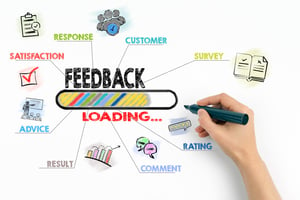Welcome back, intrepid alchemists! We have navigated the trials of crafting a vision, wielding user...
The Alchemist's Backlog - Taming the Ever-Growing List: Part 5 of An Alchemist's Guide to Product Management
Welcome back, alchemists! We have mastered the art of crafting a vision, wielding user stories for collaboration, and prioritising features with a data-driven touch tempered by "Dude's Law." Now, let us delve into the ever-growing list of features, desires, and potential improvements – the product backlog. Here, we will learn how to manage this ever-shifting landscape, ensuring it remains a clear and effective roadmap to product success.
The Backlog: A Cauldron of Ideas
Imagine your product backlog as a bubbling cauldron filled with a diverse mix of ingredients: user stories, bug fixes, feature requests, and even a sprinkle of future innovations. As a product alchemist, it is your responsibility to manage this cauldron, ensuring its contents are well-defined, prioritised, and continuously refined.
Progressive Elaboration: The Alchemist's Refinement Process
Not all features are created equal. Some require intricate details and specifications, while others can be outlined with a simpler approach. Here's where progressive elaboration comes in:
- High-Level Epics: At the top of the cauldron sit high-level epics – broad themes that encompass larger functionalities. These act as initial placeholders, providing a high-level overview of future development areas.
- User Stories & Acceptance Criteria: As epics are refined, user stories are born. These provide detailed descriptions of features from the user's perspective, along with acceptance criteria – the specific conditions that define a successful feature implementation.
The Art of Clarity: Maintaining Focus in the Backlog
Just as a cluttered workbench hinders an alchemist's work, a messy backlog can impede progress. Here is how to ensure clarity:
- Prioritisation: Regularly revisit your prioritisation criteria (golden thread, data, user impact). Reorder your backlog as needed to ensure you are focusing on the most valuable items first.
- Estimation & Timeboxing: Estimate development effort for each user story. This allows for realistic roadmap planning and prevents feature creep – the uncontrolled addition of features that can derail your schedule.
- Grooming & Refinement: Conduct regular backlog grooming sessions with your team. Review items, update priorities, and remove outdated or irrelevant features. This keeps your backlog lean and focused.
Dreams & Data Collide: The Roadmap Emerges
By effectively managing your backlog, you transform a chaotic list into a clear and actionable roadmap. This roadmap serves as your guide, outlining the features you will tackle in upcoming development cycles. It is the bridge between the dreams and aspirations captured in your backlog and the data-driven decisions that shape your product's evolution.
Stay tuned, alchemists! In Phase 6, we will explore the power of Minimum Viable Products (MVPs), Objectives and Key Results (OKRs), and how to maintain clarity throughout the product development process.



